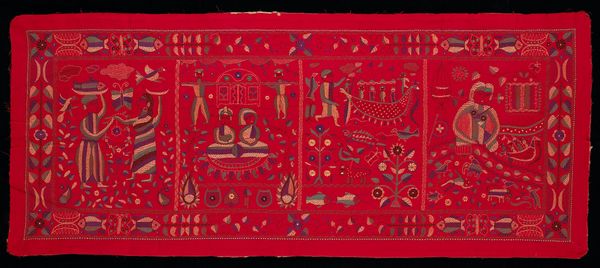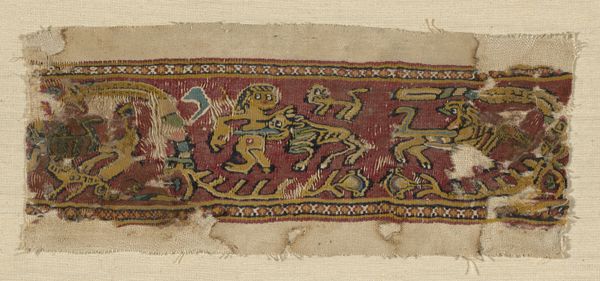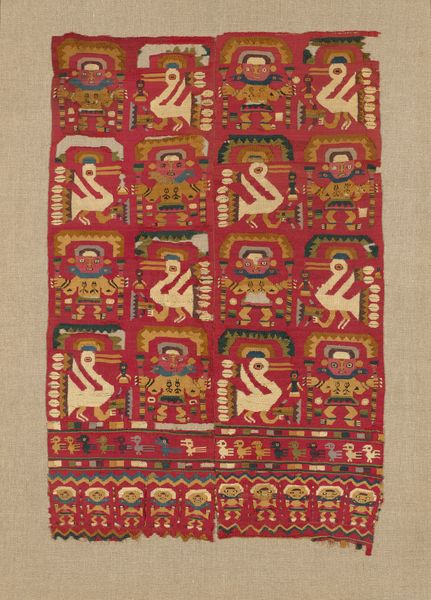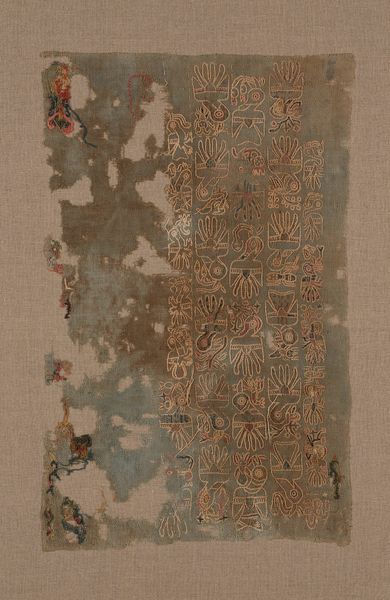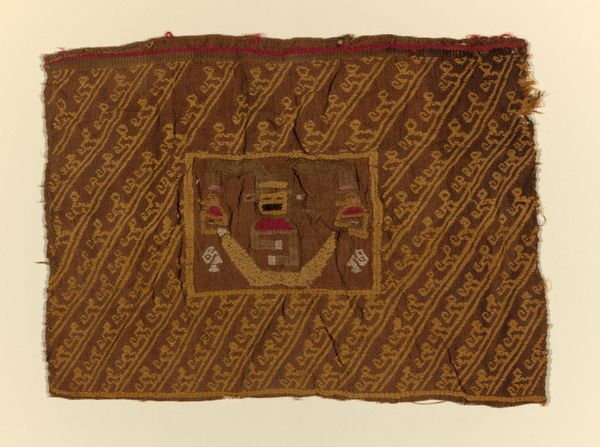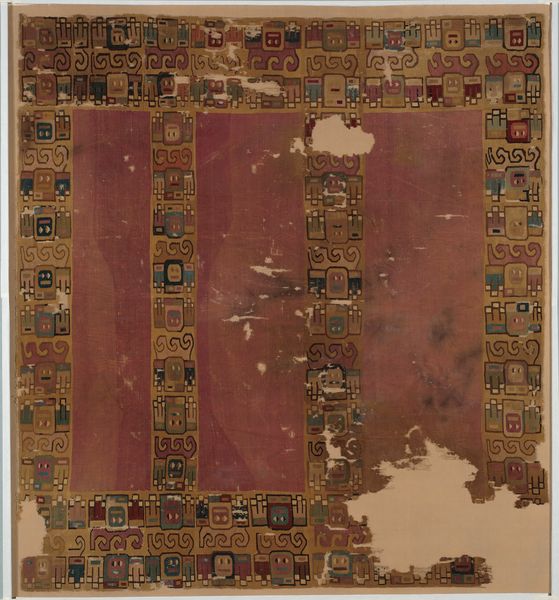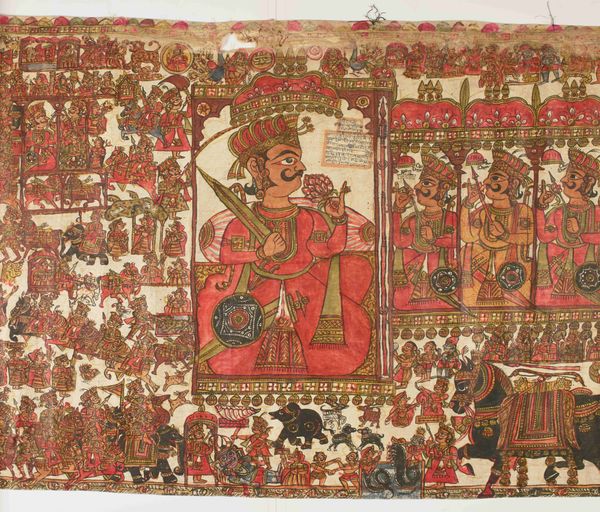
fibre-art, weaving, textile
#
fibre-art
#
weaving
#
textile
#
figuration
#
geometric
#
indigenous-americas
Copyright: Public Domain
This fragment was woven in ancient Peru by the Nazca people, and is a potent reminder that even the smallest remnant of textile art can speak volumes. The design of repeated figures, perhaps deities or high-status individuals, immediately suggests a rigidly structured society. Consider the cultural context of the arid coastal region, where resource management and social hierarchy were intertwined. The red background, likely derived from local plants, might signify power or lifeblood, while the stylized figures with elaborate headdresses may represent status. Textiles in Nazca society weren’t just functional items; they were powerful visual statements. A fragment like this offers a glimpse into the ways in which the Nazca visualized and reinforced their social structure. Through careful study of archaeological records, textile production techniques, and ethnohistorical accounts, historians piece together the cultural narratives embedded in these ancient works. The meaning of this art lies in understanding its role within the social and institutional frameworks of its time.
Comments
No comments
Be the first to comment and join the conversation on the ultimate creative platform.

